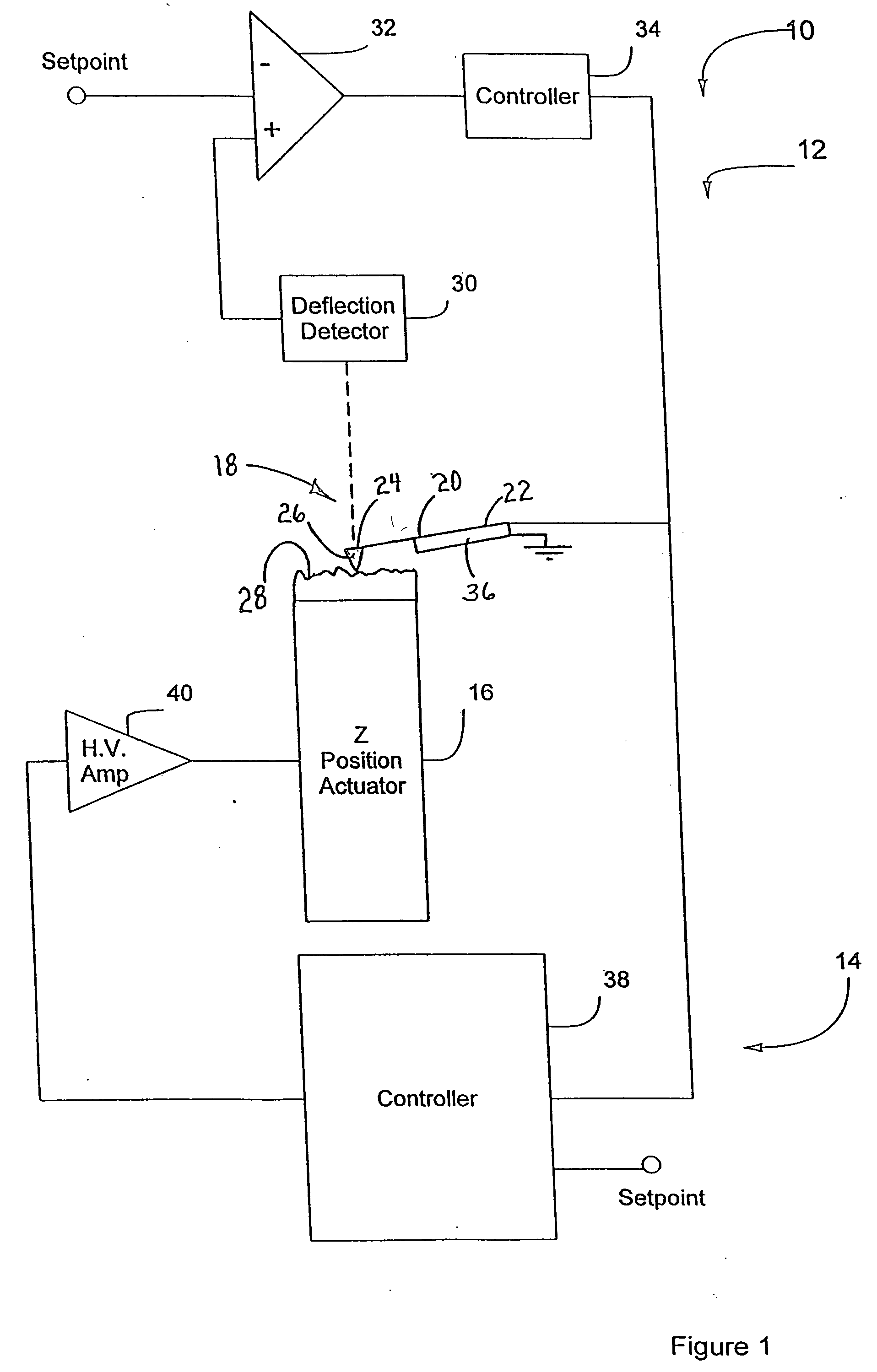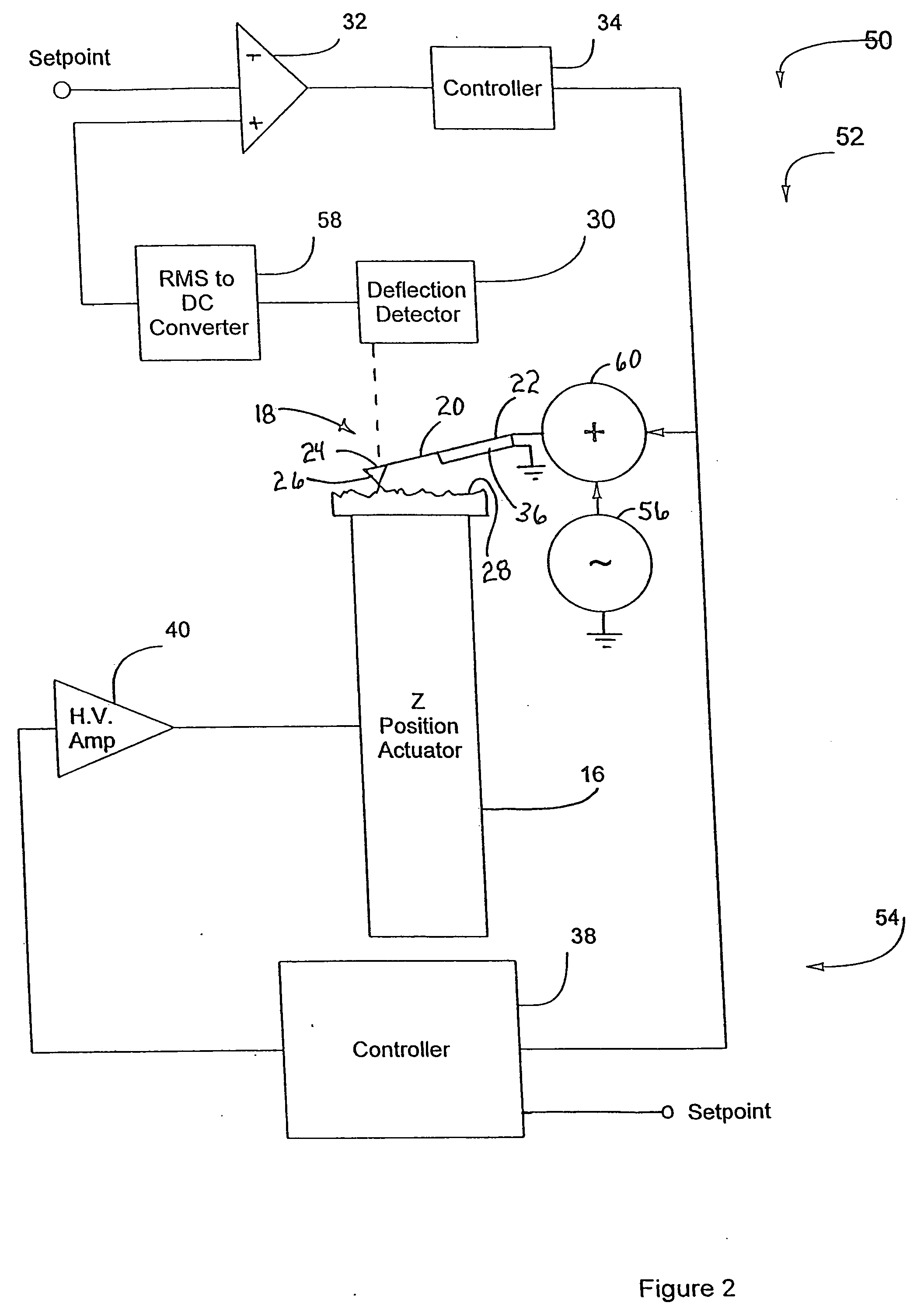Dynamic activation for an atomic force microscope and method of use thereof
a technology of dynamic activation and atomic force microscope, which is applied in the direction of mechanical roughness/irregularity measurement, instruments, measurement devices, etc., can solve the problems of limited throughput per machine, speed of atomic force microscope is typically far too slow for production applications, and the use of afm is more extensive, so as to improve the speed and ease of use of atomic force microscope, the effect of improving efficiency and cost-effectiveness
- Summary
- Abstract
- Description
- Claims
- Application Information
AI Technical Summary
Benefits of technology
Problems solved by technology
Method used
Image
Examples
Embodiment Construction
[0056] Referring to FIG. 1, an AFM 10 according to the present invention, which is configured for contact mode operation, is shown. AFM 10 includes two feedback loops 12 and 14 that control an AFM Z position actuator 16 and a probe assembly 18, respectively. Probe assembly 18 includes a self-actuated cantilever 20 having a tip 26 that interacts with a sample during scanning. When scanning in contact mode, tip 26 generally continually contacts the sample, only occasionally separating from the sample, if at all. For example, at the end of a line scan tip 26 may disengage the sample surface. While it scans the surface of the sample, cantilever 20 responds to the output of feedback loop 12 to ultimately map the topography of the surface of the sample, as described in further detail below.
[0057] Cantilever 20 includes a fixed end 22 preferably mounted to an AFM mount (not shown) and a free distal end 24, generally opposite fixed end 22, that receives tip 26. In operation, the interactio...
PUM
 Login to View More
Login to View More Abstract
Description
Claims
Application Information
 Login to View More
Login to View More - R&D
- Intellectual Property
- Life Sciences
- Materials
- Tech Scout
- Unparalleled Data Quality
- Higher Quality Content
- 60% Fewer Hallucinations
Browse by: Latest US Patents, China's latest patents, Technical Efficacy Thesaurus, Application Domain, Technology Topic, Popular Technical Reports.
© 2025 PatSnap. All rights reserved.Legal|Privacy policy|Modern Slavery Act Transparency Statement|Sitemap|About US| Contact US: help@patsnap.com



